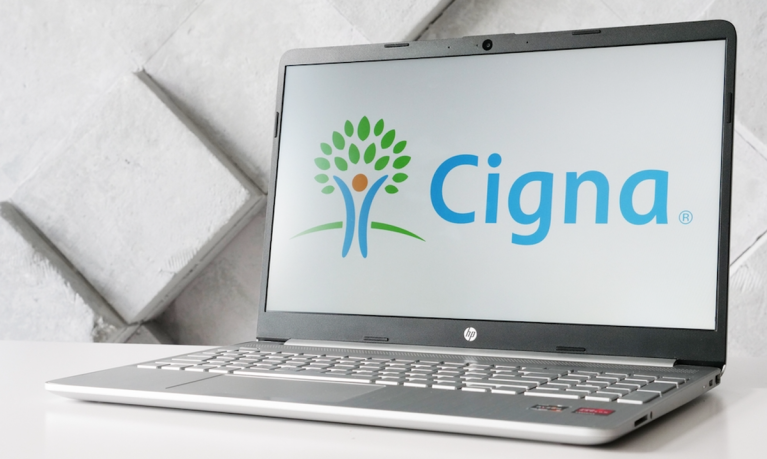
As the telehealth sector is projected to reach $450 billion by 2032, Cigna Healthcare recently launched an “E-Treatment” option via MDLIVE, offering customers access to urgent care from board-certified doctors without the need for direct phone or video consultations.
Starting this month, patients can submit a virtual clinical interview for common, lower-risk conditions — such as allergies, urinary tract infections and respiratory illnesses — and usually receive a diagnosis and treatment plan within an hour.
Patients can initiate the process through myCigna.com, completing a virtual interview in eight to 10 minutes. Once reviewed by a doctor, patients receive a summary via text or email, and any necessary prescriptions are sent to their preferred pharmacy.
In an interview with PYMNTS, Shannon Olson, VP of U.S. Employer Strategy and Core Solutions for Cigna Healthcare, talked about the company’s new E-Treatment service.
“E-Treatment gives customers another way to quickly access quality care without the need to talk ‘live’ with a doctor,” Olson said. “Customers simply provide information about their medical history and current condition through a dynamic online questionnaire in the MDLIVE patient portal. The treating doctor will review the information submitted and quickly deliver a diagnosis and treatment plan, including sending any necessary prescriptions to the customer’s pharmacy of choice. Customers will be notified through email or text when their visit summary is ready.”
Traditional telemedicine, Olson noted, engages a synchronous model where a doctor and patient talk live either by phone or video.
“For those who don’t have time to step away for a phone or video call or may prefer an asynchronous experience — maybe from nerves, trouble hearing or a loud household — E-Treatment is available for the same quality urgent care services,” she said.
Cigna is committed to expanding access to affordable and convenient care for its customers, Olson said, noting that MDLIVE has become popular since the COVID-19 pandemic.
“We continually look for new options to be added to our portfolio to improve the health and vitality of our customers,” she said.” E-Treatment was a great next step in continuing this delivery.”
Cigna’s customers recognize the convenience of accessing care from their smartphones or computers whenever they need it without having to spend time in traffic or sitting in a doctor’s waiting room, Olson said.
“Cigna Healthcare has significantly expanded access to covered virtual care services for millions of customers enrolled in [fully insured] employer-sponsored plans,” she added, noting these plans include no co-pays with MDLIVE primary care providers, chronic condition management and integrated referrals to follow-up care with specialists..
Olson said E-Treatment is powered by MDLive’s Bright.md technology, which provides clinical questionnaires to support diagnosing and treating conditions.
“These comprehensive questionnaires are evidence-based and dynamically changing — allowing for a thorough, personalized experience for each patient,” Olson said. “The questionnaire has been vetted and contributed to by clinical leadership or large, leading health system partners across the U.S. All care decisions are made by board-certified doctors.”
What has the feedback been?
“Internal data show that 99% of patients are happy with their E-Treatment experience,” Olson said, noting many of them are first-time participants. “In fact, 34% of E-Treatment customers were using virtual care for the first time. E-Treatment is able to be started on a customer’s own schedule so they can initiate care when it is convenient for them. It is also available in Spanish (in addition to phone/video visits), where the questionnaire and after-visit summary are prepared in Spanish.”
The PYMNTS “ConnectedEconomy™ Monthly Report” for April 2023 noted patient participation in telehealth since January 2022 ranged from 30% to 40%, not far below the roughly 50% figure for monthly in-person visits.
In an interview with PYMNTS last year after GNC embraced virtual health, Allison Bentley, senior director of strategic programs at GNC Health, discussed the rationale.
“After years of research, it was clear how necessary supplemental virtual healthcare is for many consumers,” Bentley said. “We know the U.S. healthcare system can be difficult to navigate, especially when dealing with high reliance on private insurance, and the need to see different specialists, who have more and more limited appointment availability, which makes the process even more complex. We took that into account and wanted to address it by offering an accessible and affordable solution for consumers across the nation.”